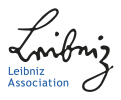Coupling of transport and chemistry
The spatial distribution and temporal variability of the radiation-active trace gases (such like ozone, water vapor and carbon dioxide) determines the global radiation and energy balances. It depends on temperature-dependent photochemical reactions and transports. The study of the vertical coupling of these complex interaction processes is challenging. The link between transport, radiation and chemistry of the middle atmosphere are subjects studied under this topic.
Methods
The studies rely on a hierarchy of models with different complexity: high-resolution circulation models (for example KMCM and UA-ICON), medium-resolution general circulation models with coupled chemistry, dedicated chemistry-transport models (for example CTM-IAP) and linear transport process models. For comparison, internationally available observations and assimilations of trace gas distributions are used. This wide spectrum of different observational data and model versions is necessary to understand the complex interaction of transport, radiation and chemistry. It gives solid ground to studies of long-term changes in the middle atmosphere (see also Long-term Dynamics). Further, new methods for the mathematical-numerical description of trace gas transports and chemistry of the mesosphere are developed.
Recent publications
- Gabriel, A., 2022: Ozone–gravity wave interaction in the upper stratosphere/lower mesosphere. Atmos. Chem. Phys. 22, 16: 10425-10441, doi:10.5194/acp-22-10425-2022.
- Grygalashvyly, M., B. Strelnikov, I. Strelnikova, M. Rapp, F.-J. Lübken, C. Schütt, C. Stephan, M. Eberhart, S. Löhle & S. Fasoulas, 2024: Chemical heat derived from rocket-borne WADIS-2 experiment. Earth Planets Space 76, 1, doi:10.1186/s40623-024-02129-x.
- Huang, Y., C. Xiong, J. Wu, C. Stolle, F. Wang, Y. Zheng, C. Xu, Y. Hu & S. Wang, 2023: Dayside Vertical Wind Reversal at Transition Altitude From E to F Regions Observed by the ICON Satellite. Earth Space Sci. 10, 5: 002836, doi:10.1029/2023ea002836.
- Kulikov, M. Y., M. V. Belikovich, M. Grygalashvyly, G. R. Sonnemann & A. M. Feigin, 2022: Retrieving daytime distributions of O, H, OH, HO2, and chemical heating rate in the mesopause region from satellite observations of ozone and OH* volume emission: The evaluation of the importance of the reaction H + O3 → O2 + OH in the ozone balance. Adv. Space Res. 69, 1: 3362-3373, doi:10.1016/j.asr.2022.02.011.
- Kulikov, M. Y., M. V. Belikovich, M. Grygalashvyly, G. R. Sonnemann & A. M. Feigin, 2022: The revised method for retrieving daytime distributions of atomic oxygen and odd-hydrogens in the mesopause region from satellite observations. Earth Planets Space 74, 1, doi:10.1186/s40623-022-01603-8.
- Lübken, F.-J., G. Baumgarten, M. Grygalashvyly & A. Vellalassery, 2024: Absorption of Solar Radiation by Noctilucent Clouds in a Changing Climate. Geophys. Res. Lett. 51, 8: 107334, doi:10.1029/2023gl107334.
- Qiu, L., X. Lu, T. Yu, Y. Yamazaki, H. Liu, Y.-Y. Sun, H. Wu, X. Zuo, X. Yan, Y. Yu & Y. Qi, 2023: Horizontal structure of convergent wind shear associated with sporadic E layers over East Asia. Earth Planet. Phys. 7, 5: 548-557, doi:10.26464/epp2023071.
- Qiu, L., Y. Yamazaki, T. Yu, E. Becker, Y. Miyoshi, Y. Qi, T. A. Siddiqui, C. Stolle, W. Feng, J. M. C. Plane, Y. Liang & H. Liu, 2023: Numerical Simulations of Metallic Ion Density Perturbations in Sporadic E Layers Caused by Gravity Waves. Earth Space Sci. 10, 8: 003030, doi:10.1029/2023ea003030.
- Sobhkhiz-Miandehi, S., Y. Yamazaki, C. Arras & D. Themens, 2023: A comparison of FORMOSAT-3/COSMIC radio occultation and ionosonde measurements in sporadic E detection over mid- and low-latitude regions. Front. Astron. Space Sci. 10: 1198071, doi:10.3389/fspas.2023.1198071.












